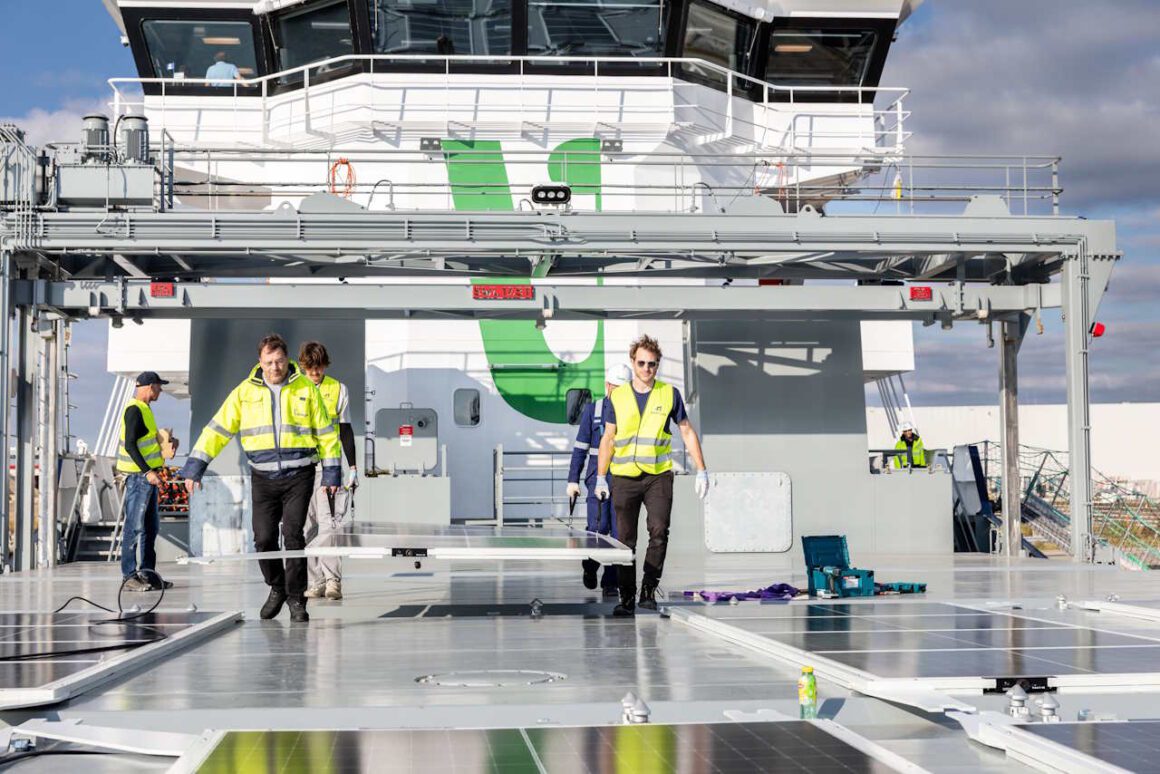Dutch maritime solar innovator Wattlab has installed a 79-kilowatt-peak (kWp) solar energy system onboard a diesel-electric multipurpose cargo vessel, which will provide power to onboard systems and slash energy use by around 20 per cent..
Wattlab, founded in 2017 to deliver innovative solar power solutions for the shipping industry, says the PV array has been installed onboard the MV Vertom Tula, a 7,280-dwt diesel-electric multipurpose cargo vessel.
Wattlab installed a total of 44 of its Solar Flatracks, a solar system which the company claims “turns unused deck space into clean, cost-saving energy, without disrupting operations.”
It took less than a day to install the solar system, using container twist lock fittings, and the system is expected to deliver a 20 per cent reduction to the vessel’s on board load.
“For shipowners, time is money, so speed and ease of use are important,” said Bo Salet, co-founder and CEO of Wattlab.
“Furthermore, we know that ‘space is money’ too. Hence, should the panels need to be removed to make way for a special type of cargo, the crew can easily stack and store them all on the footprint of one 20ft container.”

The MV Vertom Tula is the first seagoing vessel to operate a Wattlab solar system, coming as it does after two successful pilots in three years.
“During the pilots, the test results showed that the Solar Flatrack system performs well in the tough coastal shipping environment,” said Thomas van Meerkerk, business development manager at Vertom.
“Based on the results of our own and TNO’s research in the past months, we consider Wattlab’s Solar Flatrack an effective option for reducing GHG and pollutant emissions. Of course, these things also depend on the conditions our vessels operate in, but it’s clear that the system can provide both a positive ROI and contribute to CO₂ reduction in shipping.
“Another benefit is that the panels can stay on the hatch covers during loading and discharging operations.
“The crew was sceptical at first, fearing a lot of extra work. However, they soon learned that in practice, Solar Flatracks are easy to use and require minimal maintenance. For example, there’s no salt crust formation, because the water can drain freely from the panels.”
Earlier this year, Wattlab also revealed that it had installed a 35kW solar system to provide power to the onboard and propulsion systems of an inland shipping cargo vessel running on the German canal network.
The successful delivery of this latest solar system and the milestone achievement of becoming the first seagoing vessel to operate such a system comes at an important time for the European shipping industry, with rising regulatory pressure and volatile fuel prices driving shipowners and operators to diversify their onboard energy mix.
Joshua S. Hill is a Melbourne-based journalist who has been writing about climate change, clean technology, and electric vehicles for over 15 years. He has been reporting on electric vehicles and clean technologies for Renew Economy and The Driven since 2012. His preferred mode of transport is his feet.

